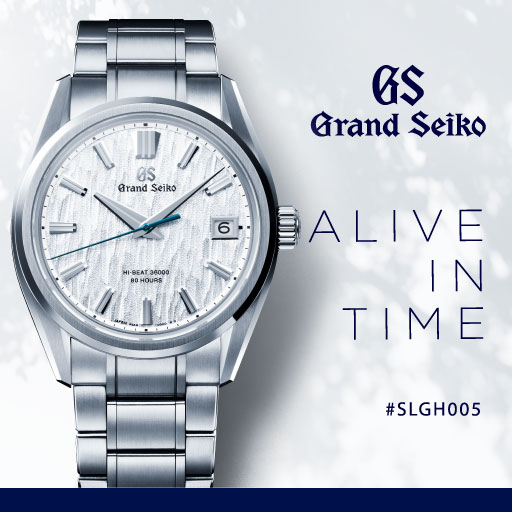NEWS
[Essay] A Visit to Samuel Morse’s House at Locust Grove Estate (by Masaaki Maeda, VP & Assistant Secretary of the Nippon Club, Inc.)
03/02/22
-

-
Locust Grove Estate
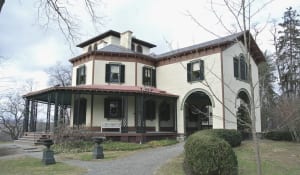
About an hour’s drive north of my house (Briarcliff Manor, NY), there is a mansion called Locust Grove Estate. This was the home of Samuel Morse, renowned inventor of Morse code. The mansion is in a great location and is complete with 40 rooms, as well as gardens and farms overlooking the Hudson River. Morse moved to this estate in 1851 and spent about 20 years with his family until his death in 1872. It is now a historic site as a museum and is open to the public.
What is Morse Code?
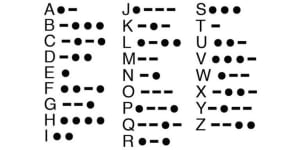
Morse code is a signal that expresses characters by combining dots and dashes. It is common to learn Morse code as a Scout or when obtaining an amateur radio license. Morse code originally was designed for the Latin alphabet, but Japanese telegrams were often transmitted using the language’s syllabic kana: a-i-u-e-o. In Japan, too, telegrams were widely used as a general means of communication before the invention of the telephone.
About Samuel Morse
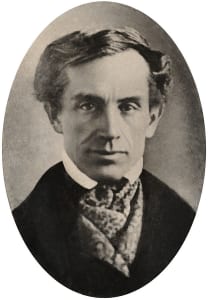
Samuel Finley Breese Morse (April 27, 1791-April 2, 1872) invented the Morse Telegraph and developed the eponymous Morse code. Additionally, he is very famous as a painter, and many of his works remain in his Locust Grove estate. Morse was born in Charlestown, Massachusetts (currently Boston). His father, Judydia Morse (1761-1826), was a Calvinist minister of British descent and became known as the “father of American geography.” His mother was Anne Finley Breeze (1766-1828). About Samuel Morse’s Paintings Samuel Morse studied at the Phillips Academy in Andover, Massachusetts, and attended Yale University to study religious philosophy and mathematics. He took lectures on electricity from Benjamin Silliman and Jeremiah Day while attending Yale. He also began to explore his talent for painting. He graduated in 1810, and Yale University still bears the name of Morse as one of its 14 colleges in honor of his achievements.
Samuel Morse as a Painter
Although more than 10 paintings are displayed in this Locust Grove Estate, Morse created many other excellent works. He first studied painting in England for three years. His masterpiece “Dying Hercules” (1812) dates from the outbreak of the War of 1812, and the painting was sometimes perceived as a political statement about Britain and the Federalist Party. Morse’s “The Judgment of Jupiter” (1815) built on a tradition of early 19th century British and American paintings that concern religious and political themes. This work allegedly expresses both Morse’s religious beliefs and his support for anti-federal masters. Additionally, his “Portrait of John Adams” (1816) depicted a former Federalist and the second President of the United States. Morse founded the National Academy of Design in New York in 1825, and he was the first director (1826-1842). He was also an art professor at New York University.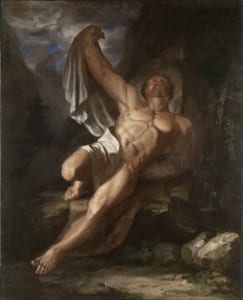
Dying Hercules (1812) About Morse’s House
The estate was first built in 1771, but Morse purchased it in 1847. According to the commentary at the exhibition, Morse became very wealthy after receiving a patent for his dot- dash telegraphy signals in 1840, and consequently his first purchase was the Locust Grove Estate. Then in 1851, it was converted into an Italian-style villa. He used the mansion as a summer house and lived in Manhattan in the winter. The Metro-North Railroad from Manhattan is now primarily used for commuting, but at the time it was a means of transportation between suburban summer homes and the city. After Morse died in 1872, his family moved out of the estate and rented it. One of the subsequent residents, William Young, moved to the mansion in 1895 and purchased it from Morse’s heirs in 1901. Recognizing its historic importance, he and his wife, Malta, restored the mansion and gardens and added new dining and guest rooms. The decorative and artistic items that the Youngs collected are now on display in each room of the mansion. Currently, Locust Grove Estate offers events such as guided tours and lectures. The five-mile road – jutting into the woods — has also been restored since its use in the 19th century, reminiscent of the exterior of the mansion when Morse lived there.Mansion Tour
I had the opportunity to participate in a 90-minute tour of the Locust Grove Estate with commentary from local volunteers. The tour rules were quite strict: photography is prohibited, physical contact with interior decoration and even doors is not allowed, and the only thing that can be touched is the handrail. It is clear that two areas of the building were used by Morse himself: his study on the first floor, and a small room with bookshelves within. This historic site is a good place to learn about the daily life of 18th and 19th-century Americans, and life itself from that time remains frozen in the walls of the estate. There are large windows in the guest room and dining room, offering a clear view of the Hudson River. It was a bit lonely in December when I visited, but from spring to autumn, visitors can enjoy the wonderful, lush landscape.Gallery of Early Telegraphs
Along the visitor center, there is a special gallery with Morse paintings and early telegraphs and keys. At this point, I’d like to discuss the main pieces and functions of the telegraph.● Morse Telegraph Patent Model (1835)
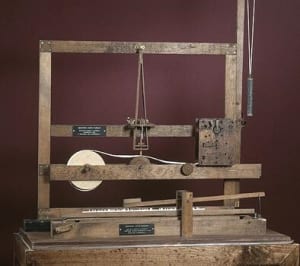
This was the development of the first practical telegraph using an electromagnet. As part of a public experiment at New York University, a 500m electric wire was stretched and a telegram transmission called Morse code was conducted by combining short points and long points. The structure of the telegraph machine uses a mechanism that pulls an iron piece using an electromagnet and sends the paper through the machine by the force of a clockwork royal fern. With an ink pen attached to the iron piece, it can make marks on the wrapping paper. The first Morse telegraph used at the time of his patent application is in the Smithsonian National Museum of American History (Washington, DC), and the exhibits here are replicas.
● Telegraph Register (1850)
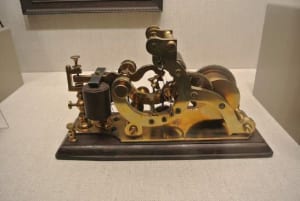
This is an improved design from roughly 15 years after the invention of Morse. The structure that draws the received dots and dashes on the moving roll paper with the pen attached to the electromagnet does not change.
● Telegraph rivals
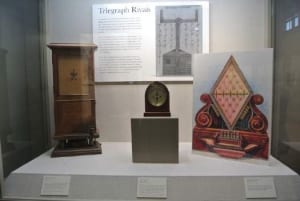
This is an exhibition of rivals of Morse’s invention developed in France and England.
● Morse communication related items such as toys and games for children
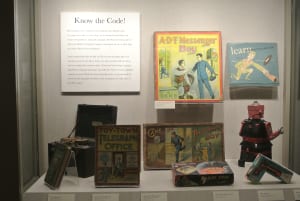
Telegraph operators such as Western Union were actively supplying their brands for games and other activities. So Morse code was the trend among people at that time.
The Four Talents
At the souvenir shop, I found a biography of Morse, entitled “The American Leonardo: A Life of Samuel F. B. Morse” was written by Pulitzer Prize winner Carleton Mabee, whose preface states that Morse is a lifetime (1) Painter (2) Inventor (3) An entrepreneur (4) A politician; he has lived in four careers. People usually say, “God doesn’t give two gifts,” but we can say Morse was an exception, endowed with four talents.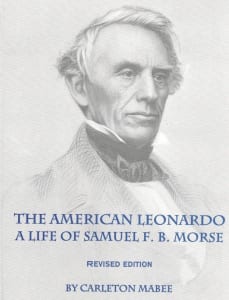
If you have a chance, take a look at the view overlooking the Hudson River, which Morse would have loved, or the interior of the mansion, and see the Morse sign-related exhibits in the gallery. In addition to Locust Grove, there is a statue of Morse in Central Park in Manhattan. The entrance to the park is named “Inventor’s Gate” after him. (Next to the intersection of Fifth Avenue and 72nd Street).
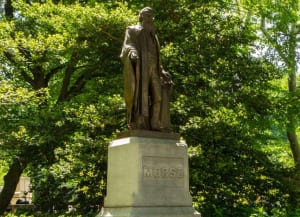
Inside Inventors’ Gate at 72nd Street and Fifth Avenue, stands a monument to the American inventor and artist Samuel F.B. Morse (1791–1872) https://www.centralparknyc.org/locations/samuel-f-b-morse
Locust Grove Estate
2683 South Road, Poughkeepsie, NY 12601
Tel. 845-454-4500
www.lgny.org<Access from Manhattan>
Poughkeepsie is located at the northern terminus of Metro-North Railroad’s “Hudson Line”. It’s about a two-hour train ride from Grand Central station. You can take a cab from a station, it’s 2-mile from the station.*This article was originally published in the February 2019 issue of “CQ Ham Radio”, published by CQ Publications in Japan.
*This article appeared in the October and November 2021 issues of JCCI’s “The Chamber’s Official” newsletter and has been edited for Nippon Club’s “Club News” newsletter.



